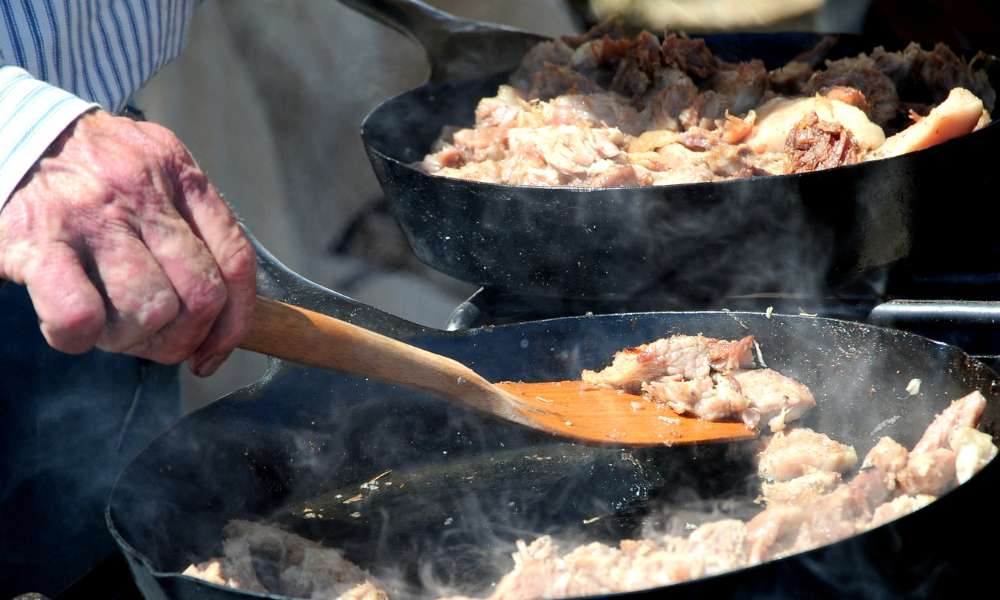Cooking in a Dutch oven offers unmatched versatility and exceptional results, making it a staple in kitchens worldwide. This timeless cookware is celebrated for its ability to retain and distribute heat evenly, creating perfectly cooked meals every time. Whether you’re slow-cooking stews, baking bread, or roasting meats, a Dutch oven enhances flavors and textures like no other. Its durable design and multi-functional capabilities make it ideal for various cooking methods, from stovetop to oven. In this article, we’ll explore why cook in a Dutch oven, uncovering its benefits, unique features, and why it’s a must-have for every home chef looking to elevate their culinary creations.
The History and Evolution of Dutch Ovens
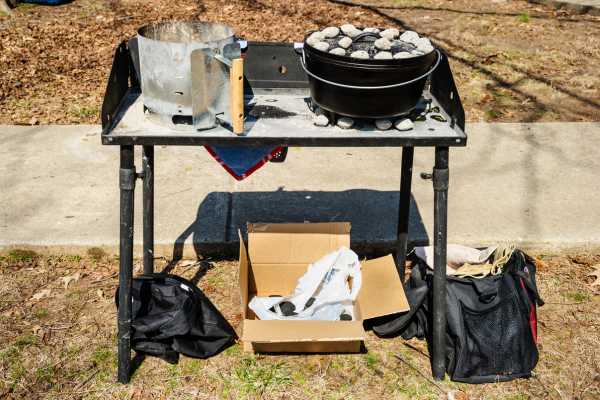
Dutch ovens have a rich history, dating back to the 17th century when cast iron cookware first gained popularity in Europe. Initially crafted using sand molds, these sturdy pots quickly became prized for their ability to retain heat and cook food evenly. Over time, Dutch ovens evolved with the addition of enameled coatings, making them more versatile and easier to maintain. Once a tool for open-fire cooking, they are now essential in modern kitchens for a variety of dishes. Their timeless design and adaptability have made them a favorite among chefs and home cooks, cementing their place as a trusted piece of cookware through the centuries.
Unique Cooking Benefits of Using a Dutch Oven
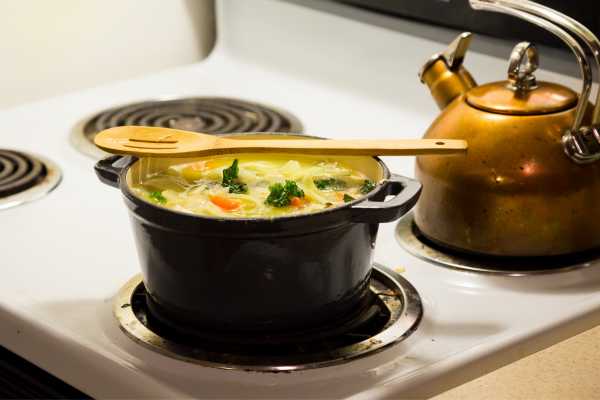
A Dutch oven’s ability to retain and evenly distribute heat makes it perfect for achieving consistent cooking results, whether simmering soups or baking bread. Its heavy-duty construction locks in moisture, allowing flavors to intensify while ensuring tender, juicy dishes. This cookware is incredibly versatile, suitable for stovetop searing, oven roasting, and even outdoor cooking. Its non-stick surface simplifies cleanup, and its durability ensures years of reliable use. Additionally, the This oven’s design allows for precise temperature control, making it a favorite among professional chefs and home cooks alike. This combination of functionality and performance makes it a game-changer for creating delicious, flavorful meals with minimal effort.
How Dutch Ovens Enhance Flavor and Texture
Dutch ovens are renowned for their ability to enhance the flavor and texture of dishes through even heat distribution and superior moisture retention. The heavy-duty design traps steam inside, ensuring meats remain tender and juicy while vegetables retain their natural sweetness. Slow cooking in a This oven allows flavors to meld beautifully, creating rich, deep profiles that are hard to achieve with other cookware. The sturdy material also promotes caramelization, adding a delicious depth to sauces and roasts. Whether simmering soups or braising meats, this versatile cookware elevates your culinary creations, delivering restaurant-quality results with minimal effort in your home kitchen.
Comparing Dutch Ovens with Other Cookware
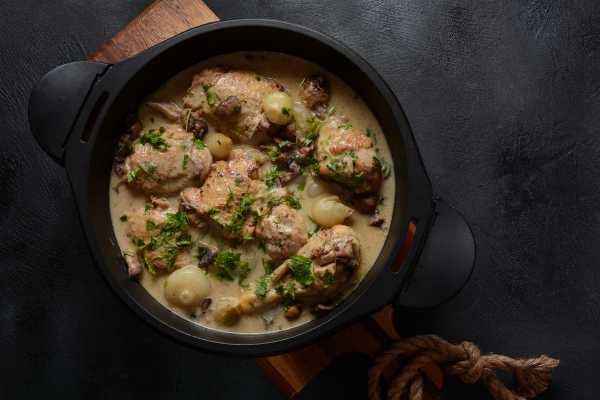
Dutch ovens stand out among other cookware for their unparalleled versatility and durability. Unlike traditional pots and pans, they excel in retaining and distributing heat evenly, ensuring consistent cooking results. Their thick, heavy walls make them ideal for slow cooking, roasting, baking, and even frying, offering functionality beyond regular cookware. Additionally, Dutch ovens can seamlessly transition from stovetop to oven, saving time and minimizing cleanup. Unlike non-stick pans that wear over time, a well-maintained This oven can last decades. Their ability to enhance flavors while being versatile for multiple recipes makes them a superior choice for both novice and experienced cooks seeking reliable, high-performance cookware.
Essential Recipes Best Suited for Dutch Ovens
Dutch ovens are perfect for preparing hearty, flavorful dishes that benefit from slow cooking and even heat distribution. Classic recipes like beef stew, chicken pot pie, and braised short ribs turn out tender and rich when cooked in this versatile cookware. This ovens are also ideal for baking artisan bread with a perfectly crisp crust and fluffy interior. Soups, chili, and casseroles can simmer to perfection, while roasted vegetables and one-pot pasta dishes showcase their versatility. With its ability to transition from stovetop to oven, the Dutch oven offers endless possibilities for creating delicious, home-cooked meals that impress with every bite.
Techniques for Mastering Heat Control in a Dutch Oven
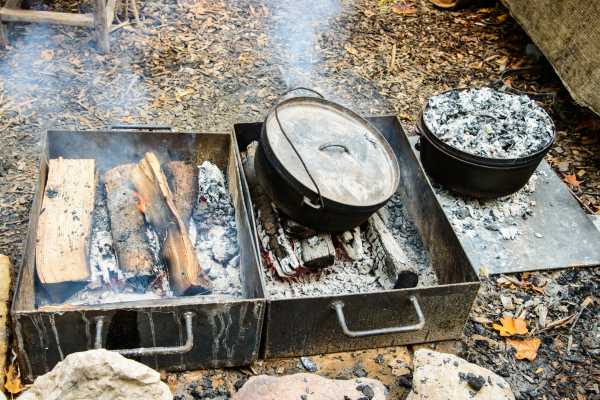
Mastering heat control in a Dutch oven begins with understanding its excellent heat retention properties. Always preheat your This oven slowly to avoid hot spots and ensure even cooking. For stovetop use, start with medium heat and adjust as needed based on your recipe. When using it in the oven, place it on the middle rack for optimal heat circulation. To prevent food from burning, layer ingredients strategically and stir occasionally. Utilizing the lid helps trap moisture and regulate temperature for consistent results. With practice and attention to these techniques, you can achieve perfectly cooked dishes every time without the risk of overcooking or undercooking.
Maintenance Tips to Keep Your Dutch Oven in Prime Condition
Proper care ensures your Dutch oven remains a reliable kitchen tool for years. Always allow it to cool before cleaning to prevent warping or cracking. Use warm water and a soft sponge to remove food residues, avoiding harsh abrasives that can damage the enamel coating. For stubborn stains, a paste of baking soda and water works wonders without scratching the surface. Regularly season uncoated cast iron This ovens to maintain their non-stick properties and prevent rust. Store your Dutch oven in a dry place, ensuring the lid is slightly ajar to avoid moisture buildup. These simple maintenance habits will keep your Dutch oven in peak condition for all your cooking adventures.
The Best Materials for Dutch Ovens: Cast Iron vs. Ceramic
Choosing the right material for a Dutch oven depends on your cooking style and preferences. Cast iron This ovens are renowned for their durability and exceptional heat retention, making them perfect for slow-cooking, frying, and baking. Enamel-coated cast iron offers the same benefits with added ease of cleaning and no need for seasoning. On the other hand, ceramic This ovens excel in heat distribution and are ideal for gentle cooking, such as casseroles and delicate dishes. While ceramic is lighter and more visually appealing, it may lack the rugged durability of cast iron. Both materials have unique advantages, so selecting the right one depends on your specific kitchen needs.
Cost-Effectiveness of Investing in a Dutch Oven
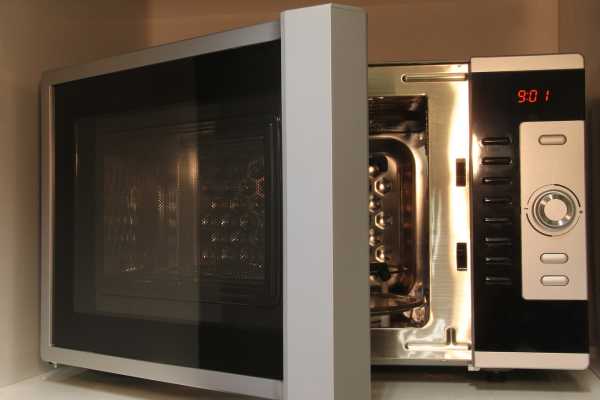
Investing in a Dutch oven is a smart choice for home cooks seeking durable and versatile cookware. Its longevity ensures it can last for decades, making it more cost-effective than frequently replacing lower-quality options. This ovens excel in various cooking techniques, reducing the need for multiple pots and pans. Their ability to retain heat efficiently means less energy is required, saving money on utility bills over time. Additionally, the consistent results they provide help minimize wasted ingredients, further maximizing value. With the capacity to handle everything from soups to baked goods, a This oven proves to be a worthwhile investment for budget-conscious and quality-focused cooks alike.
Expert Tips for First-Time Dutch Oven Users
First-time Dutch oven users often overlook the importance of proper seasoning, especially for cast iron models, to prevent sticking and enhance durability. Always preheat the oven gradually to avoid thermal shock, which could crack enameled surfaces. For optimal cooking, use low to medium heat, as This ovens retain and distribute heat efficiently. Avoid abrasive cleaning tools that may damage the finish, and instead, opt for gentle scrubbing with warm, soapy water. Experiment with versatile recipes like soups, stews, or slow-cooked meals to get comfortable with its capabilities. These expert tips will help you maximize the potential of your This oven and ensure it becomes a cherished kitchen essential.
Conclusion
Understanding why cook in a Dutch oven reveals its unmatched versatility and efficiency in the kitchen. This timeless cookware excels at delivering rich flavors, even cooking, and the flexibility to handle various recipes, from slow-cooked stews to perfectly baked bread. Its durability ensures it’s a long-term investment for any home chef. Whether you’re an experienced cook or a beginner, a This oven simplifies meal preparation while enhancing culinary creativity. By incorporating it into your cooking routine, you’ll experience the blend of tradition and innovation that makes it a favorite among chefs worldwide. Embrace its benefits and elevate your kitchen game effortlessly.
